By DNR Samaranayaka –
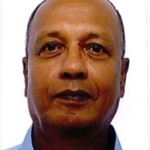
DNR Samaranayaka
The controversial Colombo Port City (CPC) project, which has been designed to reclaim the seabed and develop a large commercial centre in an area covering 230 hectares adjacent to the city of Colombo, remains under suspension since early March 2015. A plethora of articles has appeared about the CPC, which is financed by the China Communications Constructions Company (CCCC), since the Sirisena government was formed and especially after the announcement by the government spokesperson, Rajitha Senaratne that the new government has given the green light to go ahead with the project. This announcement contradicted the promise made by the coalition during the election campaign about its imminent closure, if elected. Ironically, the approval of the CPC by the new government was made without giving any reasons or explanations as to why the government retracted from its earlier commitment.
Because of these articles, highlighting various issues that are associated with the CPC, there has been a significant interest and an awareness of the project among professionals, journalists, politicians and others in the country. Most of the articles written on this subject argue that due mainly to environmental implications of the project on the western coastline it should not be undertaken. Other issues such as the cost of the project to the country, sovereignty, regional security, impact on domestic physical resources required for the construction of the project and possible congestion in the Colombo city and its surroundings have been cited as objections. Some writers also argue that the project has certain benefits that can help the country to attract more investments, and, therefore, if the project is abandoned it will adversely affect the investment flow to the country. Others dismiss the environmental concerns claiming that they are just a gimmick used to prevent the project going ahead. A number of journalists have also contributed to the debate. An editorial in a leading English newspaper justified the project because the termination of it could impact negatively on the relationship between the two countries. Some journalists have also focused on the plight of the workers due to its suspension and they urge the government to consider its continuation. The Chinese too have actively participated in the debate through advertisements in the print media justifying the project.
Unawtuna Beach: an example relevant to CPC
The initial opposition to the CPC was from the environmentalists. They opposed the implementation of the project on the basis that the environmental assessment, carried out by the Moratuwa University, does not provide a complete and comprehensive assessment of the effects of the proposed project on the coastal environment. However, they did not pursue this matter any further because of the fear of prosecution by the former regime if they protested against the project. Although this issue had been highlighted during the presidential election by the coalition, it was not considered important once the Sirisena government was formed, but it is one of the issues currently under consideration by the review committee appointed by the government. Its inclusion in the review now implies that it is one of the key issues that will determine the status of the project. As stated by Eran Wickramratne, deputy minister of investment promotion, if the environmental impact of the project on the Western coastline is going to be too great, then the project is likely to be discontinued.
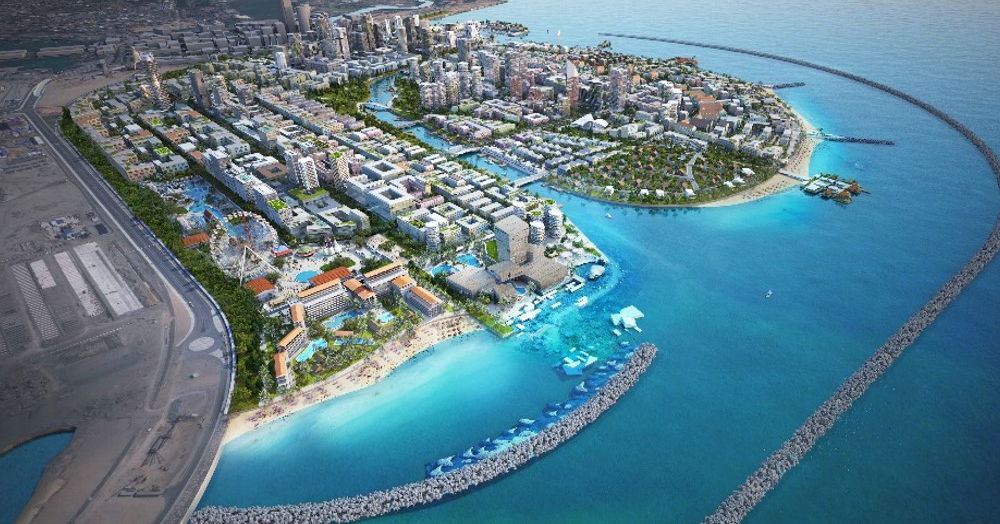 While the review committee is considering the environmental effects of the CPC, the Unawtuna Beach in Sri Lanka is gaining attention in a far- away country as an example of the adverse effects of building breakwaters along the shoreline. A decision to build a breakwater to resolve beach erosion in the Westmoreland resort in Jamaica has been objected by the Negril Chamber of Commerce using the effects of the breakwater in the Unawatuna beach in Sri Lanka. According to a report appeared in the Jamaica Observer on April 23, 2015. It said, “ … the once flawless crescent of sand along a palm-lined shore with turquoise waters is now blanketed with jagged rocks. The Unawatuna beach spans nearly 1 ½ kilometres and has attracted both the local and foreign tourists for over half century.” It further said, “The Sri Lankan breakwater, which stretches nearly a kilometre into the ocean, has disturbed the natural balance of the echo system and is wasting away the sand from one half of the beach, and depositing it on the other half. The government of Sri Lanka is now working to partially remove the breakwater in order to rectify the situation and has resorted to beach nourishment with 300, 000 metric cubic meters of sand being pumped from the middle of the ocean in order to recreate the beach.”
While the review committee is considering the environmental effects of the CPC, the Unawtuna Beach in Sri Lanka is gaining attention in a far- away country as an example of the adverse effects of building breakwaters along the shoreline. A decision to build a breakwater to resolve beach erosion in the Westmoreland resort in Jamaica has been objected by the Negril Chamber of Commerce using the effects of the breakwater in the Unawatuna beach in Sri Lanka. According to a report appeared in the Jamaica Observer on April 23, 2015. It said, “ … the once flawless crescent of sand along a palm-lined shore with turquoise waters is now blanketed with jagged rocks. The Unawatuna beach spans nearly 1 ½ kilometres and has attracted both the local and foreign tourists for over half century.” It further said, “The Sri Lankan breakwater, which stretches nearly a kilometre into the ocean, has disturbed the natural balance of the echo system and is wasting away the sand from one half of the beach, and depositing it on the other half. The government of Sri Lanka is now working to partially remove the breakwater in order to rectify the situation and has resorted to beach nourishment with 300, 000 metric cubic meters of sand being pumped from the middle of the ocean in order to recreate the beach.”
This assessment of the impact of the breakwater on the Unawtuna beach clearly highlights the difficulty of determining a disturbance to the natural flow of ocean water on the beach and its immediate environment. Highly sophisticated statistical models are currently used to forecast the movements of the ocean water under various scenarios; however, they cannot predict the actual impact of the disturbances created by breakwaters or similar structures. It will only be known only after the project is implemented. This illustrates how the CPC could disturb the natural flow of currents and waves as well the beachfront beyond the immediate vicinity of the CPC project and they could be permanent and irreversible. This is one of the reasons that the fisher folks are seriously objecting to the construction of the CPC. According to the Media the CCCC was willing to compensate those affected by the project living in the coastal areas, but this is not going to stop with the current generation; it will continue to affect all future generations. Furthermore, this offer also implies the recognition, by the Chinese, of the possibility of such adverse outcomes because of the CPC.
Claims of corrupt practices by the CPC investor
Another issue that has been heavily publicized is the scale of corruption in projects funded by the Chinese government. In an interview with Andrew Stevens of CNN, finance minister, Mr Ravi Karunanayake, described the extent of corruption under the previous government by saying ‘bridges were built where there were no rivers and airports were constructed in the middle of nowhere: that was the level of corruption that was going on.’ In the same interview, Mr Ravi Karunartane said, “The Chinese companies used the opportunity of a corrupt regime to crowd out other companies coming in’. This statement clearly implies that some Chinese companies use unethical practices to secure development projects solely for the benefit of the company or the contractor. Frequently, these projects exaggerate the benefits to the country even though such claims are never supported with evidence. Although the minister did not mention any project specifically, the CPC, among the projects funded by the Chinese government, is of particular importance since it is still at initial stages. All other projects are already completed or nearing completion. The funds that were used on these projects cannot be recovered; the only thing that can be done is to take action against those involved in such corrupt practices. In the case of the CPC, there is still a possibility to stop it. According to the evidence emerging from various sources and the actions being taken by the Bribery commission to investigate large-scale corruption, not only the politicians, but also some high-level officials appear to be involved in such corrupt practices.
Based on the information currently available to the public on the status of the CPC, it appears that the government is not investigating any corruption in the CPC. After the President’s visit to China, for example, Mr Liu Jianchao, assistant Minister of Foreign Affairs has said ‘President Sirisena has stressed that what happened around the port city is rather temporary, and the problem does not lie with the Chinese side and hopes to continue with the project after things are sorted out.’ On the following day, the deputy Foreign Minister, Ajith Perera, denied this report that the president had given such an assurance. Another statement made by Mr Ravi Karunanayake, Minister of Finance, giving an interview to the South China Morning Post also said ‘we are telling Chinese companies that we are keen to have clean, transparent and accountable investments. Port City should not be the benchmark. There are serious problems with the project that we are trying to fix. It has nothing to do with our attitude to Chinese investments’. Both statements made by Mr Maithripala Sirisena and Mr Ravi Karunanayake have been issued outside of Sri Lanka and they both clearly indicate the approval of the project once the formalities are completed.
However, there are good reasons for this matter to be thoroughly investigated since there is reliable evidence that CCCC has a history of employing unethical or corrupt practices in foreign funded projects. According to a communiqué, issued by the World Bank, CCCC is barred from undertaking any project funded by the World Bank for eight years from July 2011 to July 2017 because of its fraudulent practices involving the Philippines National Roads Improvement and Management project. Posting this sanction on the internet, the World Bank informs the seriousness of the charges levelled against the CCCC and gives a warning to other countries who are engaging the CCCC as a contractor for large-scale infrastructure projects. The action by the World Bank creates serious doubts about the credibility as well as the integrity of the CCCC. The World Bank statement clearly suggests that CCCC has been responsible for blowing up project costs to provide kickbacks to politicians and high-level officials to secure lucrative projects. Such a black mark shows the extent to which CCCC would go to secure contracts and to make the already corrupt regime even more corrupt. This ruling by the World Bank also raises the concern as to whether the Sri Lankan government should be dealing with a company that has been black listed.
Uneconomical projects undertaken by Rajapaksa regime
Some of the projects undertaken during the Rajapaksa regime were intended to provide some economic and social benefits for the people. Among these are the roads and highways; these two areas had received very little attention prior to 2005. Some of these projects were undertaken under the patronage of the former defence secretary, Gotabaya Rajapaksa. Although these projects do not provide direct financial benefits, they are still needed for any developing economy to provide wide ranging economic and social benefits to the public such as to improve accessibility and mobility across the country as well as to promote income-generating activities that would help economic growth and employment generation. While what the former government had done in these areas need to be recognized and appreciated, there is, however, a serious issue if the costs of these projects are inflated much beyond the actual costs. This is what the people are hearing since the fall of the Rajapaksa regime. Statements such as ‘the highest cost of road construction per kilometre in the world has been reported from Sri Lanka under the Rajapaksa regime’ clearly support that the corrupt practices in the road sector had been rampant. Any difference between the actual costs and the reported costs of the the project is then siphoned by someone else. It appears therefore these projects are simply undertaken for the benefit of those directly involved in the decision making process. In fact, the statement that ‘roads that go nowhere’ made by Ravi Karunanayake appeared to be referring to such projects. If this is the case, these projects were undertaken not for the benefit of the people, but to provide an opportunity to amass wealth by a few through corrupt practices. The benefits that the society receives, under such circumstances, will have only a residual value.
Two other projects financed by the Chinese that have attracted criticisms from writers from various backgrounds are the Hambantota harbour and the Mattala airport. The initial estimate of the harbour was US$ 360 million and the Chinese reportedly financed about 80% of this estimate. After the completion of the project, it was found out that the harbour is not suitable for large vessels due to a massive rock blocking the mouth of the entry thus preventing the inward and outward movements of large-scale vessels. Unfortunately, these things were not discovered or remained unknown at the time the decision was made to build the harbour. In fact, there is no evidence that a comprehensive feasibility had been carried out to determine the suitability of the site and the potential benefits of the project. If that had been carried out, the mapping of the sea bed around the proposed project would have detected the blockage to the harbour. The failure of the authorities cost the government an additional amount of US $ 221 million, increasing the cost to US 580.0 million.
The expected income from commercial operations of the Hambantota harbour was estimated at Rs 15 billion (US$ 150 million) at the design stage. It began its commercial operations in 2012 and received an income of Rs 1.1 billion from October 2012 to December 2013. Its income in 2014 has increased by about Rs 4.0 billion, from bunkering services provided to 230 foreign vessels, to over Rs 5 billion. The revenue generated by commercial operations is still far too little in terms of the loan repayment liabilities and the annual cost of maintence of the harbour. The loan is payable over an 11 year period, with one year grace period. At an annual interest rate of 6.3%, which is significantly higher than the international lending rate determined by LIBOR, the financing of the debt incurred by the harbour could be around US$ 800 million or Rs 80 billion, which includes the loan (US$ 580 million) and the interest on the loan (US$ 219.3 million). However, this amount could go up if any payment is defaulted since it will add interest on the unpaid amount. Since the revenue from the harbour is unlikely to reach the expected target, servicing the loan will be a severe burden for the cash trapped treasury at present.
A loan of US$ 200 million provided by the Chinese government helped finance the Mattala airport built at a cost of US$ 209 million. The airport has a 10,000 square meter capacity and a runaway extending up to 3,500 meters. It has been built to accommodate A 380 airbus with 555-seater capacity, which is one of the most advanced aircrafts currently in operation. The commercial operations of the airport began in October 2012; however, due to lack of business it was closed on 30 April 2015 under the Sirisena government. During this period, the airport had been used by 36,137 passengers: 22,853 outgoing, 13,284 incoming and 13,284 transits. The total income up to September 2014 had been Rs 143.9 million and the expenditure Rs 2,900 million, resulting a loss of Rs 2,756 million. Even with such huge losses, this airport would have been in operation if former president returned to power because it would add to his profile of an unshakable leader. The new government is now faced with a monthly payment of Rs 250 million (US$ 2.5 million) to service the loan on the airport.
Out of these two projects, Mattala airport, surrounded by the least developed area in the country, should not have been considered in any event. Even someone with no project experience would have known that Mattala airport is uneconomical because the airport can never generate a traffic volume to make it a profitable venture. The problem with the Hambantota harbour is not so much with its location, but its highly inflated cost of construction. Based on the commercial operations of the port since 2012, it appears that it has the opportunity to be used as a transits hub, but the huge cost of construction has made it a very unprofitable venture. Choosing the location with a blockage has cost an additional 65% to the original cost to the harbour. Furthermore, it is becoming common knowledge that about 30% to 40% of the total cost of infrastructure projects is also misappropriated by the politicians and the officials under the Rajapaksa administration.
The government is now faced with a serious debt service burden due to the large scale projects undertaken during the Rajapaksa administration. With very limited foreign reserves, servicing the debt will be a huge challenge for the new government. This will certainly affect the country’s borrowing capacity for projects that are really needed. The ability to borrow for future requirements has been significantly constrained by the decisions that were made to glorify the achievements of the Rajapaksa clan.
Implications of Chinese investments on unprofitable projects
There has been an interest on the Hambantota harbour since the beginning of 2000. A number of prefeasibility studies were carried out at that time and the most comprehensive feasibility was carried out by a Canadian firm. They concluded that the Hambantota Harbour is not economically viable because it has no competitive power to capture bunkering operations from other ports using this route. It is, therefore, difficult to understand why the Chinese government agreed to fund the harbour project. Usually large-scale projects of this nature are always subject to extensive feasibility studies to determine their financial viability. There is no evidence that the Chinese have done a comprehensive pre-feasibility, and if the Chinese had done feasibility, they too would have come to the same conclusion. In the case of the Mattala airport, there is no legitimate reason for the Chinese to support this project with a loan of US$ 200 million. Before the airport was built, there was no development in or around the site of the airport and even after it was built, there is hardly any development that had taken place. The airport was built by clearing the forest and the possibility of the availability of the land to build the airport was the only aspect that received consideration by the government. They never thought about the financial viability of operating an airport in an isolated location.
In this context, the commitment of the Chinese to invest on uneconomical projects in Sri Lanka raises a serious issue as to whether the Chinese always knew that these projects were not going to be financially viable. They probably knew, especially after winning the LTTE terrorism, the intentions of the Rajapaksa administration was to build projects that would promote his image. As a result of this victory, he was bestowed with a king-hood by the local populace. These projects undertaken by the Rajapaksa administration and the projects that were in the pipeline to be implemented in his third term in office were essentially to establish Hambantota as a modern city fit for a king. The funds for such projects too would undoubtedly come from the Chinese. This arrangement appears to have worked perfectly well for both parties since Rajapaksa wanted loans from the Chinese and the Chinese wanted to establish their regional power in the Indian ocean. According to some reports, the port city concept was also originated from the Chinese
How the loans of these two projects would have been repaid if Rajapaksa returned to power also add to the argument that the Chinese knew about the difficulty that the Rajapaksa administration would face. They also knew that Rajapaksa administration could not borrow from any other source and, therefore, they were ready to provide financial support to service the loans. This arrangement entails borrowing from the Chinese to pay back the Chinese loans, and it would have entangled the Rajapaksa administration in a severe debt trap. In that event, what the former president would have done can be gauged from the handing over of 20 hectares of sovereign land to the Chinese ownership in the CPC project after its completion. Even though the entire loan of the Hambantota harbour is to be paid back at a 6.3% interest rate, the Chinese also have some controlling power of the harbour. This is another example that tells what the intentions of the Chinese are. The CPC could also fall into this trap if the Sri Lankan government cannot find the funds to develop the CPC. In that event, some form of acquisition of this site by the Chinese is very difficult to avoid.
Applying Yahapalanaya to CPC
The decision to continue or discontinue the CPC now lies with the government. An announcement in this regard is expected once the ongoing review, focussing on certain irregularities involving the CPC, is completed. Whatever the decision by the government it should disclose fully the details of the decision. This is because the public has the right to know on what basis the decision was made, especially if the decision is to continue the project. Although the government has committed to practice Yahapalanaya, it remains as a slogan introduced simply for the purpose of winning the last election. There is hardly any difference between Yahapalanaya and Mahinda Chinthanaya since they both are hollow slogans. Even the partners of the new government find fault with the Yahapalanaya principle. Field Marshal Sarath Fonseka openly criticise yahapalanya by saying that both the president and the prime minister are compelled to look after corrupt high-ranking politicians in their own camps. Among others that are incompatible with the Yahapalanaya concept are the Central Bank bond issue and the appointment of President’s brother as the CEO of the SLT and giving him a whopping raise from Rs 950,000 to Rs 3 million per month. The question that most people would like to know is what did he do to deserve this increase? Unfortunately, the answers from the government are hard to come by.
*The writer is an economist. He also published another article earlier under the title ‘Economics of the Colombo Port City Project’ in the Colombo Telegraph.
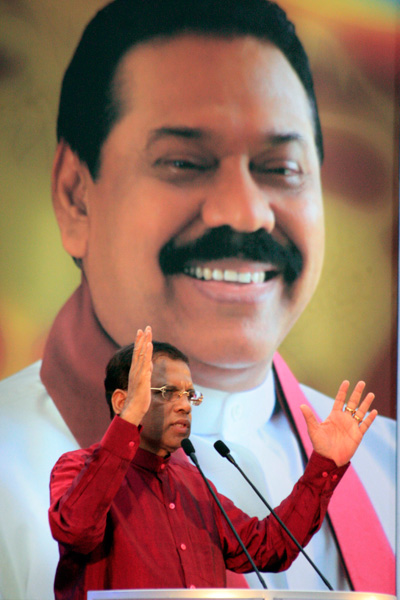 Sirisena came to power in January with an ambitious one hundred-day agenda. We are now nearly a month previous those 100 days. How significantly progress has he produced on his agenda?
Sirisena came to power in January with an ambitious one hundred-day agenda. We are now nearly a month previous those 100 days. How significantly progress has he produced on his agenda?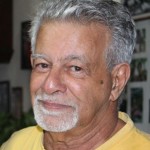
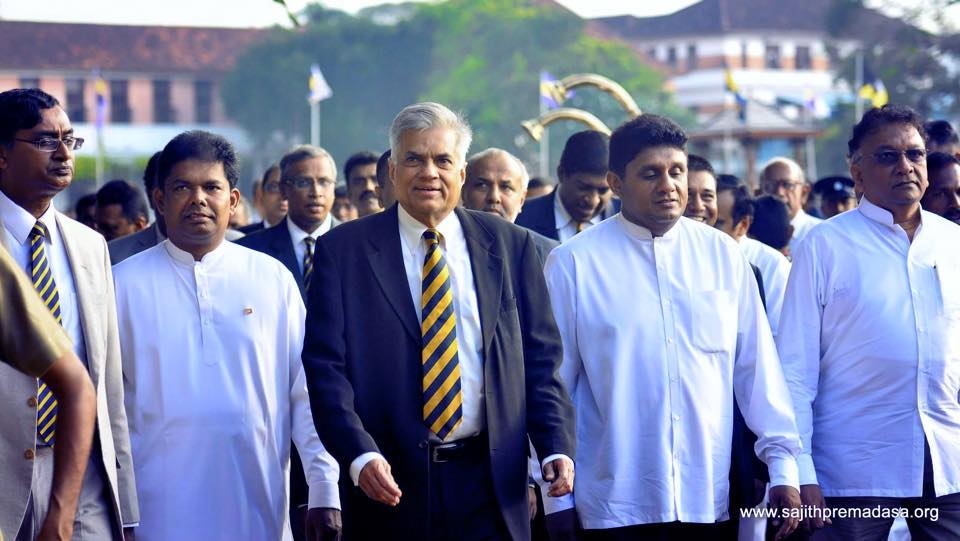 I will continue to espouse the “Feet to the fire” slogan relative to Mr. W’s bunch whose primary qualification appears to be to have entered that educational institution down Reid Avenue and/or belonged to the traditional Uncle Nephew Party clique of yore. As an aside to this, might I suggest that
I will continue to espouse the “Feet to the fire” slogan relative to Mr. W’s bunch whose primary qualification appears to be to have entered that educational institution down Reid Avenue and/or belonged to the traditional Uncle Nephew Party clique of yore. As an aside to this, might I suggest that 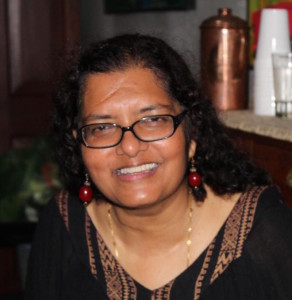
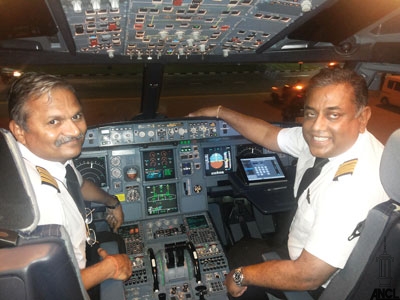

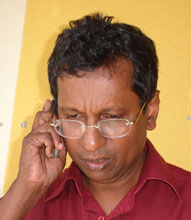


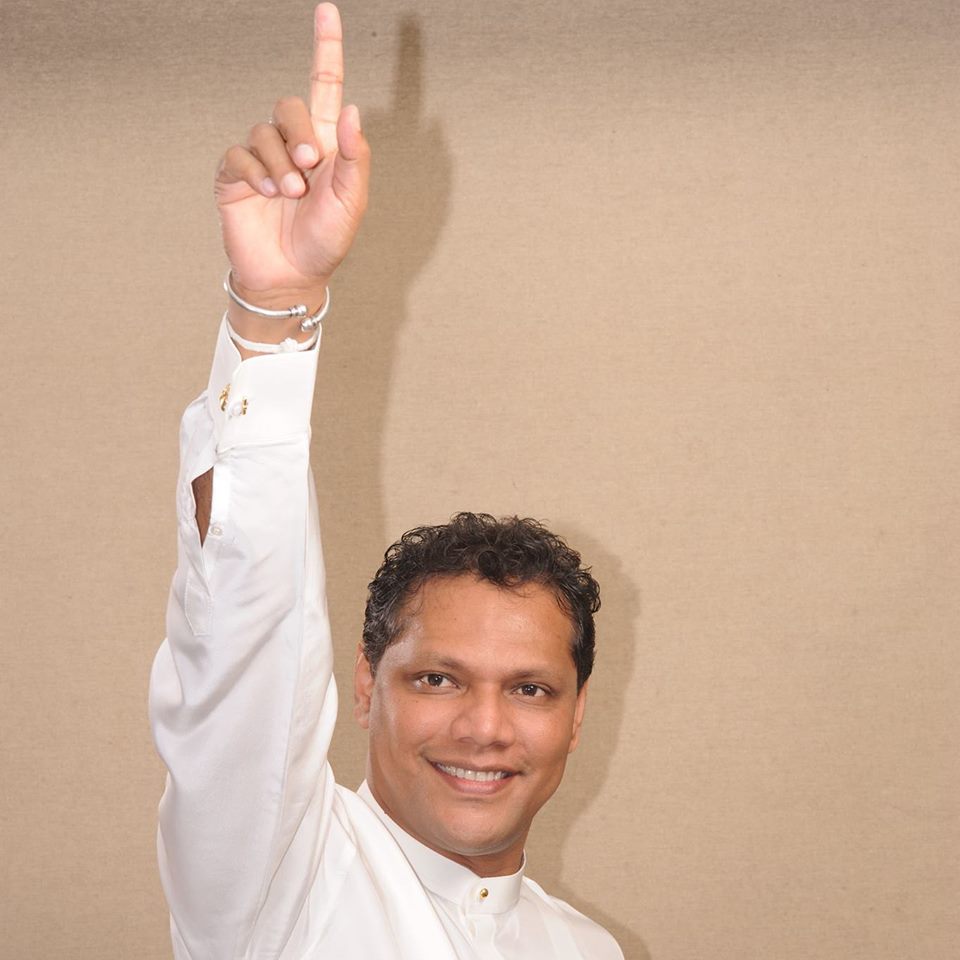 “There absolutely comes a time where a fresh pair of eyes and fresh leadership would be very good. The party has got some fantastic individuals coming up – the Dayasiri Jayasekaras and the Arjuna Ranatungas and the Duminda Dissanayakas. There is lots of talent there. I am surrounded by really good men and women.” the President told his closest advisors after yesterday’s meeting with former President
“There absolutely comes a time where a fresh pair of eyes and fresh leadership would be very good. The party has got some fantastic individuals coming up – the Dayasiri Jayasekaras and the Arjuna Ranatungas and the Duminda Dissanayakas. There is lots of talent there. I am surrounded by really good men and women.” the President told his closest advisors after yesterday’s meeting with former President 
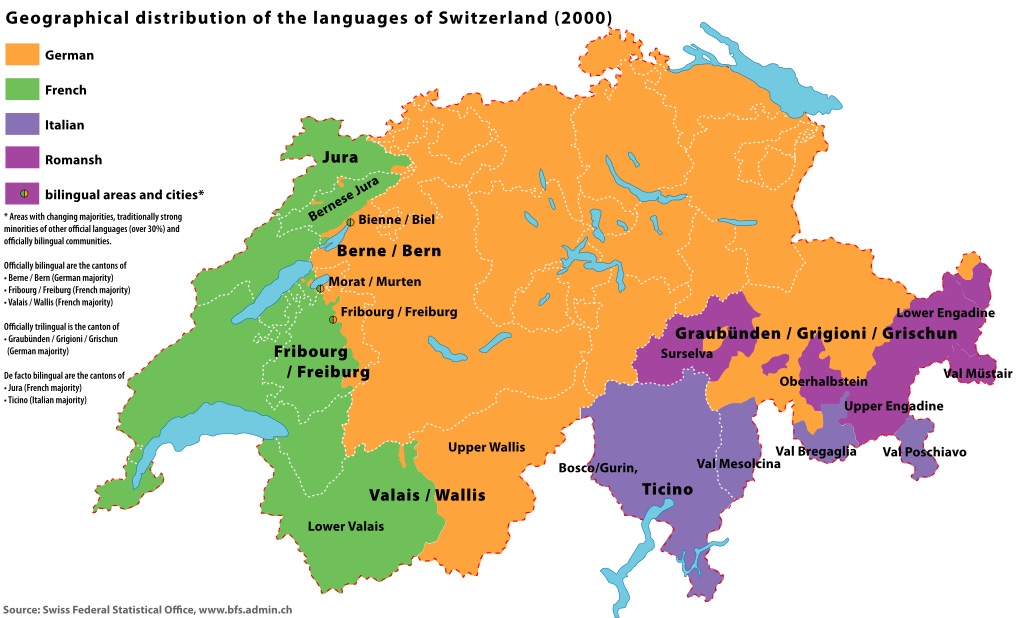
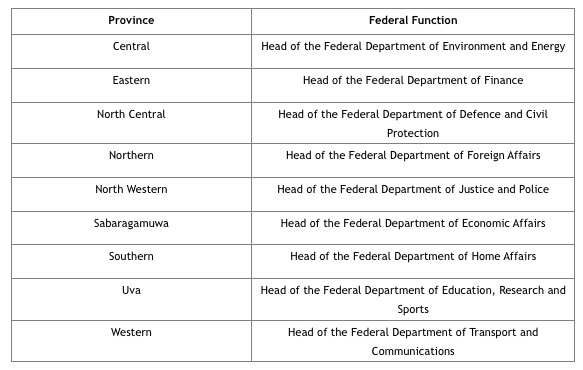 Like in Switzerland, there will be no complete time head of state. Rather the federal council will act collectively as the head of state. Nonetheless, like in Switzerland, due to the national and international need to have for a distinct individual to represent the country, the representational functions of a president will be taken by a single of the members through a yearly rotation system e.g. the Central Province member will be president with the Eastern Province member as Vice President. The following year, the Eastern member will turn out to be president and the North Central member becoming Vice President etc.
Like in Switzerland, there will be no complete time head of state. Rather the federal council will act collectively as the head of state. Nonetheless, like in Switzerland, due to the national and international need to have for a distinct individual to represent the country, the representational functions of a president will be taken by a single of the members through a yearly rotation system e.g. the Central Province member will be president with the Eastern Province member as Vice President. The following year, the Eastern member will turn out to be president and the North Central member becoming Vice President etc.